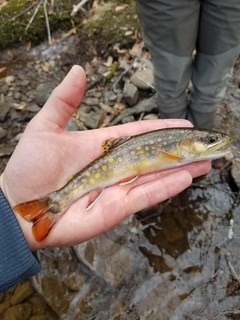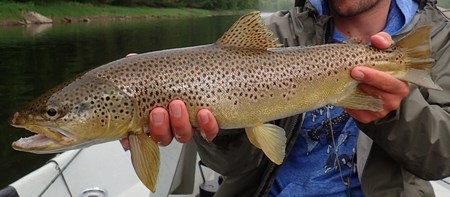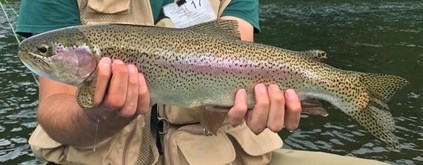
Adam Nidoh Brook TroutSalvelinus fontinalis – Native Brook Trout are generally dark green to brown with dark colored markings. The sides are lighter in color with yellow and red dots and an orange belly with a black streak. They prefer cold clean streams, and do not tolerate temperatures over about 65° F. Spawning occurs in early through late fall, when females create a depression in the gravel at the bottom of a stream. Depending on the size of the fish, they may produce only a few hundred eggs or several thousand. Once the eggs are fertilized, they are covered with another layer of gravel and will hatch in late winter or early spring. Brook Trout’s diet consists of insects, crustaceans, and small fish. 
Jesse Filingo Brown TroutSalmo trutta – Nonnative 
Adam Nidoh Rainbow TroutOncorhynchus mykiss – Nonnative Fishing catch your Fancy?Fishing on the Upper Delaware
|
Last updated: March 27, 2025



